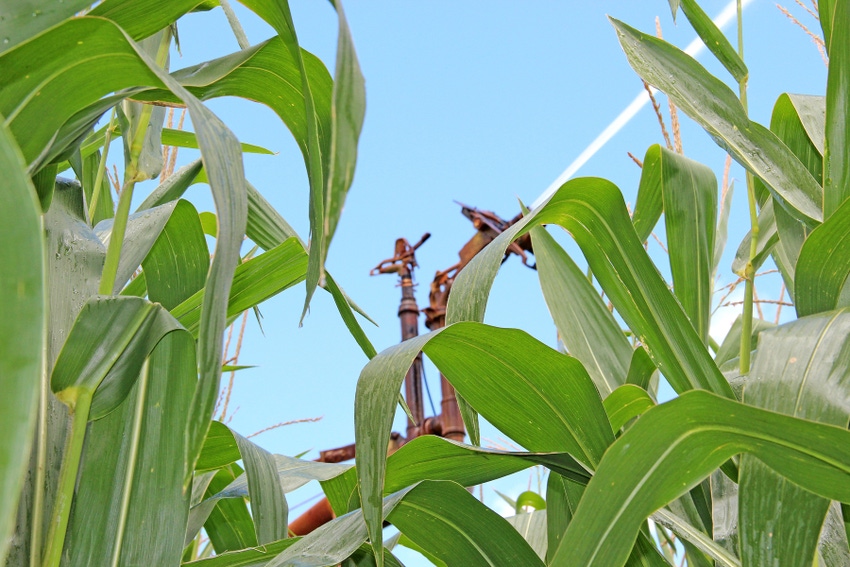
Midwest drought could persist, meteorologist says
Extreme drought and heat has gripped a large portion of the Midwest, shriveling corn yields and producer profits. The drought extends into portions of the Mid-South.The heat has significantly reduced corn yields in the affected states, and pushed corn futures prices higher on fears of corn production shortages.

The worst drought since 1988 has gripped a large portion of the Midwest, shriveling corn yields and producer profits. The drought, along with extremely high temperatures, extends into the Mid-South and has been particularly damaging to dryland corn production in west Tennessee.
The drought and heat could not have come at a worse time, according to grain analyst Richard Brock, with Brock Associates. “Early planted corn has turned out to be a detriment because it has matured too early. All this heat is hitting during the pollination period. The heat is hurting a lot more than people have recognized. There are some areas where the proven yields are 220 bushels to 225 bushels an acre that could end up less than 100 bushels, maybe as low as 70 bushels.”
The dry weather will not only impact yield but harvested acres of corn as well, as producers disk up dead and dying plants, Brock says.
Related content at: Heat and Drought
The Midwest drought extends from Bloomington, Ill., south and east. “North of Bloomington and most of Minnesota and Iowa are still in pretty good shape,” Brock said. “But crops that were in good shape five or six days ago, where there was no rain and temperatures over 100 degrees, we’ve seen some considerable deterioration.”
According to meteorologist Drew Lerner, World Weather, Inc., the culprit for the drought is a high pressure ridge over the Midwest. The ridge, which has strengthened more than meteorologists had anticipated, “dried down the topsoil to the point where there is no moisture feedback into the atmosphere,” Lerner said. “So there’s nothing to stimulate any kind of cooling.”
The ridge was expected to begin moving westward in early July, bringing some cooler temperatures to the Midwest from Canada. But little relief in terms of rainfall is in the forecast. By mid-July, the ridge was expected to have begun a trek back toward the eastern United States. But this is not likely to provide any relief in terms of moisture either.
“This is something that is probably going to be around for a while,” Lerner said of the Midwest situation. “We’ll probably see some changes, but we’re at the point of no return so to speak.”
Once the high pressure ridge moves back eastward, it is expected to open up the Mid-South for moisture from the Gulf of Mexico, according to Lerner. The moisture not expected to reach Midwest states.
Rain may be too late to help the west Tennessee corn crop, according to Angela McClure, corn and soybean specialist for the state. “Some of it has gotten to the point where it’s not going to do a lot. We’re expecting to have some significant yield hits on non-irrigated corn. In so many areas, we had no moisture going into the heat wave. So we had nothing to draw from. It’s pretty serious.”
According to Jason Kelley, wheat and feed grain specialist for the University of Arkansas, early-planted and irrigated corn are still holding up under the drought. In fact, many producers are shutting down wells on early-planted corn and preparing for harvest. “We’re about to the end on a lot of it.
“Where we’re not able to water, some corn is looking pretty rough. It seems like corn held up pretty good, but over the last couple weeks, things have gone downhill, with the 100 degree temperatures. But if we didn’t have irrigation, we’d be in trouble.”
Corn futures have risen sharply on the expectation of significantly reduced U.S. corn yields. With corn futures trading above $7 a bushel, “it’s a runaway bull market,” Brock said. “You get some emotion in there, it could do anything in a very short time frame. Somewhere between $7.20 and $8.60 there are a lot of upside objectives. I wouldn’t rule that out.”
Brock noted that drought markets “peak quickly because the fundamentals of a short supply are obvious and get built into the market quickly. The top of the market will not likely occur until the public starts jumping on board, which they have not done yet. The blowoff top will likely happen before July is over.”
Brock said the sharp increase expected in corn prices will result in significant increases in corn acres both domestically and worldwide. This in turn will increase fertilizer demand and fertilizer prices much more than previously expected. With these fundamentals the best selling opportunity for the 2013 corn and soybean crops will likely occur within the next six weeks.”
Fall harvest weather in the Mid-South will likely be affected by a strengthening El Nino, according to Lerner. “The odds are relatively good that the first part of the fall will be fairly dry, but will turn wet later in the season. Crops that are delayed until later could run into a problem with wetness.”
An El Nino will bring wet, cool conditions into the Mid-South for the rest of the winter, according to Lerner. Typically, an El Nino will not bring a lot of rain into the Midwest during the winter, Lerner said. “So there is still a good chance that we will have moisture deficits in the Midwest in the spring of next year. The Delta, Southeast and Southwest should expect more moisture than they had this past spring.”
About the Author(s)
You May Also Like





